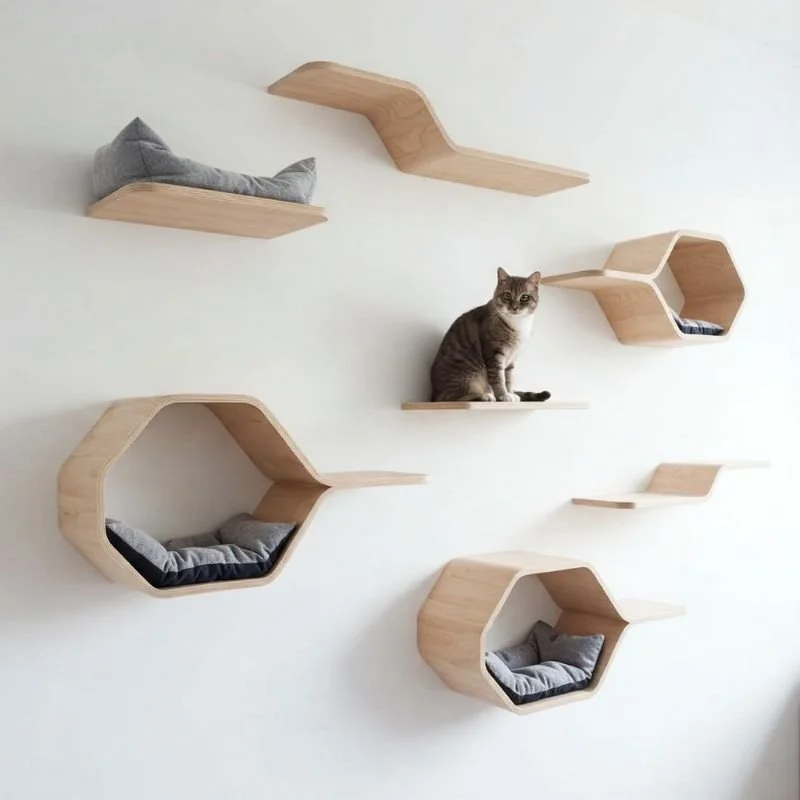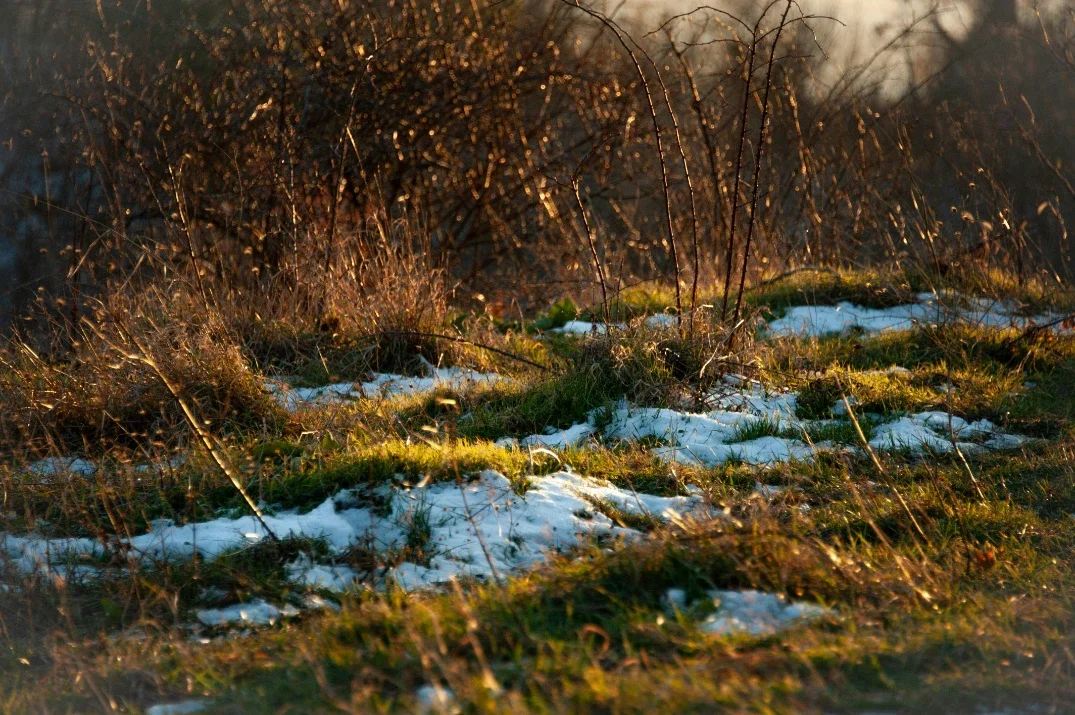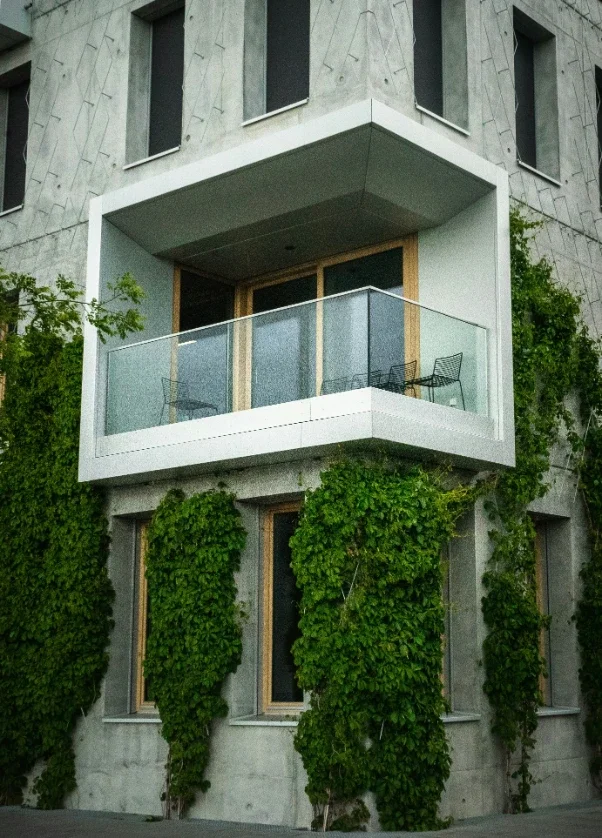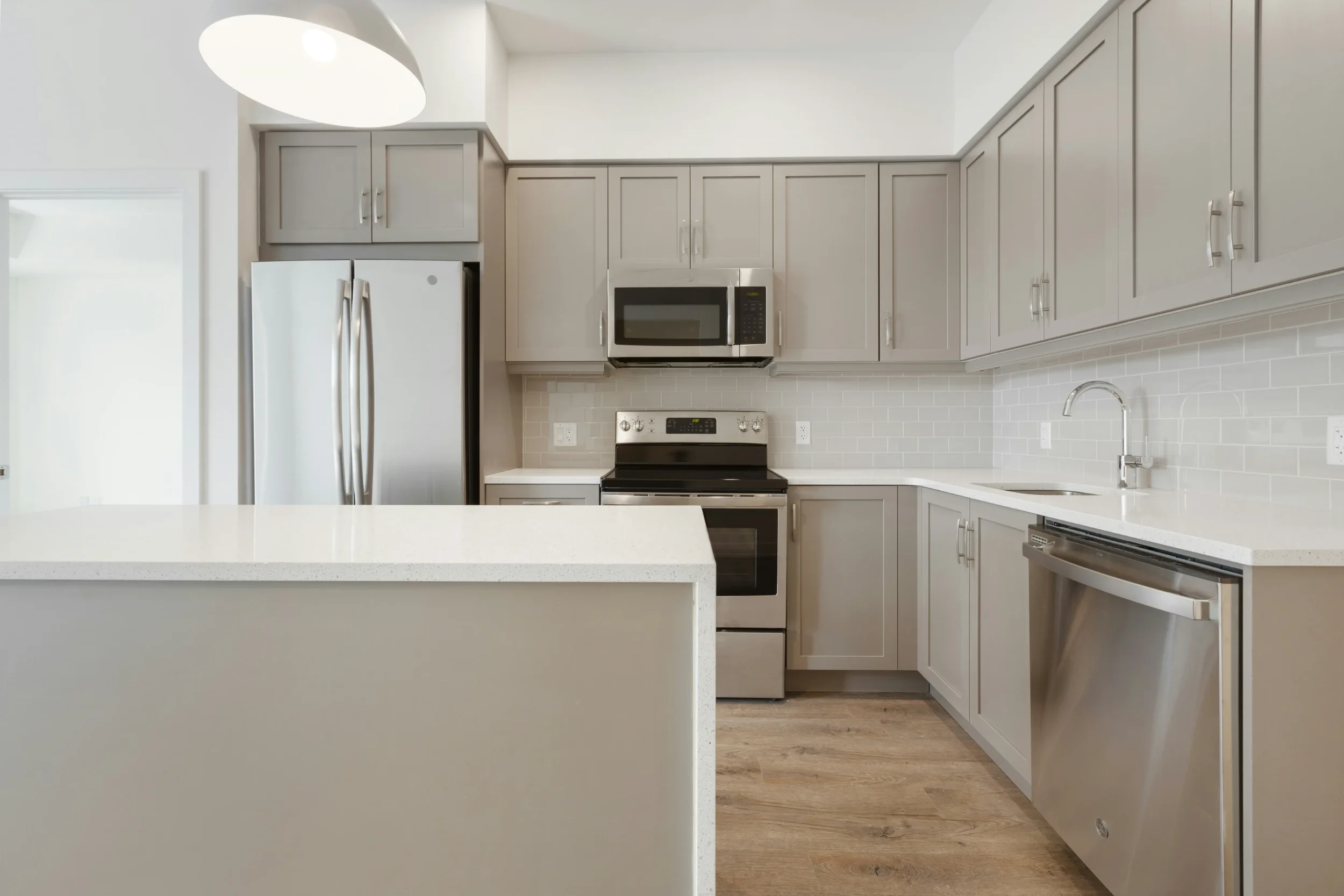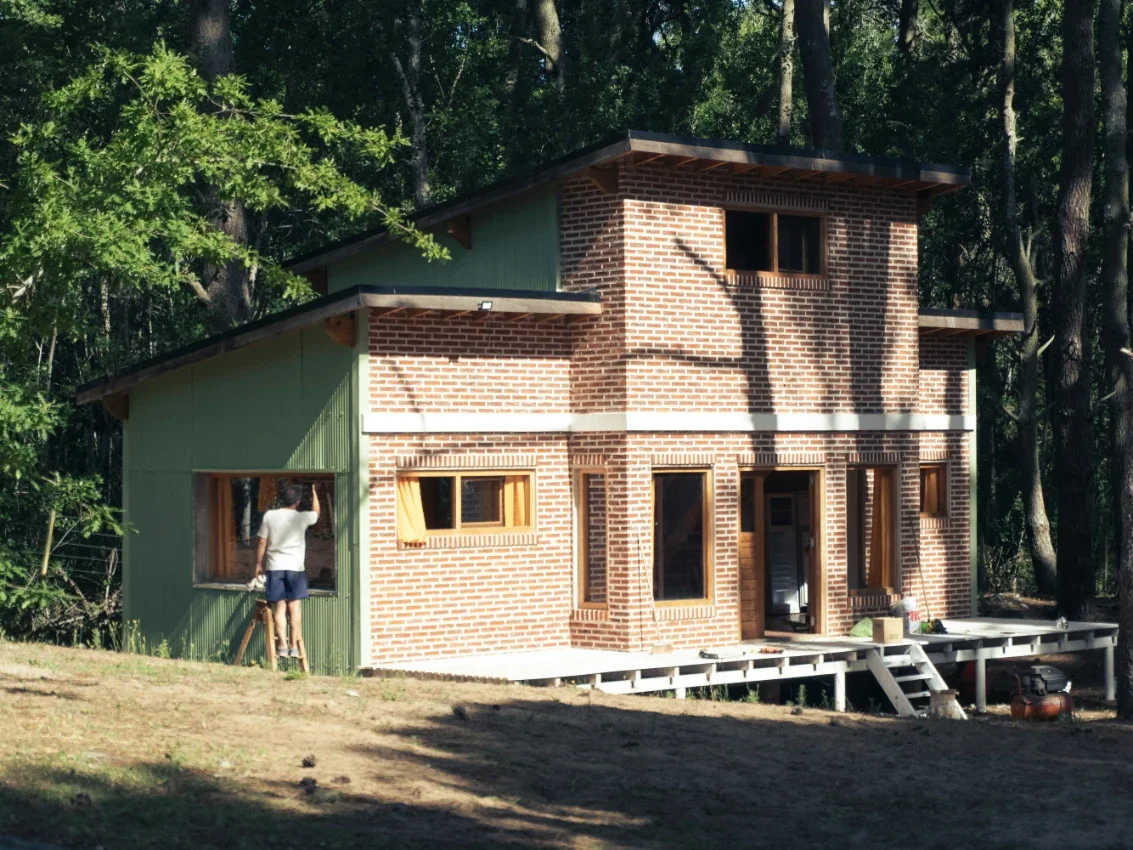15 Stylish DIY Cat Wall Ideas to Try Today
Transform your home with 15 stylish DIY cat wall ideas that satisfy your pet's climbing instincts while enhancing your décor. From floating shelves to hidden passageways, discover creative solutions that keep your feline friend entertained without sacrificing your personal style.
We've all been there—watching our beloved feline acrobats precariously balance on bookshelf edges or attempt death-defying leaps from furniture that was never designed for their climbing adventures. Our cats instinctively seek height and verticality, but our homes are typically designed with horizontal living in mind. This fundamental mismatch creates a silent tension in many cat-loving households: how do we honor our pets' natural behaviors without turning our carefully curated living spaces into chaotic climbing gyms? The answer lies in the growing trend of cat walls—thoughtfully designed vertical spaces that give our feline friends the elevation they crave while maintaining (or even enhancing) our home's aesthetic appeal. I've spent years helping pet owners reclaim their space through creative solutions that satisfy both human design sensibilities and feline instincts. Whether you're dealing with limited floor space in a tiny apartment or simply want to provide enrichment for your indoor cats, these 15 DIY cat wall ideas will transform unused vertical territory into purr-worthy playgrounds that you'll be proud to display. Ready to elevate your cat's world—literally—while creating conversation-starting design features? Let's scratch the surface of what's possible when function meets feline-friendly style!
1. Floating Minimalist Cat Shelves
Transform your blank wall into a sleek climbing path with strategically placed floating shelves that satisfy your cat's vertical ambitions while maintaining clean, contemporary aesthetics. These minimalist platforms, staggered in step-like configurations, create an invisible stairway to cat heaven that doesn't scream "pet furniture." I recommend using solid wood shelves with hidden bracket mounting for the most polished look—think walnut, maple, or ash for natural elegance. Haven't you noticed how cats somehow look more regal when perched on beautiful materials? The key to success lies in thoughtful spacing—approximately 16-18 inches between shelves allows for comfortable jumping distances while preventing awkward stretching. Add subtle touches like small raised edges on select platforms to prevent accidental toy drops, and consider microsuede or removable carpet tiles for traction on slippery surfaces.
2. Natural Wood Branch Climbing System
Bring the outdoors inside with a nature-inspired climbing structure that transforms sturdy tree branches into an organic vertical playground. This approach celebrates natural materials while creating a biophilic design element that enhances your décor. Start by sourcing hardwood branches (oak, maple, or fruit trees work beautifully) with interesting shapes and secure attachment points. Wouldn't your cat love to climb the same way they would in nature? I've found that leaving bark intact on portions of the branches provides excellent gripping texture, while sanding and finishing other sections creates appealing contrast. Mount these branches securely to wall studs using concealed hardware, arranging them in a climbing pathway that mimics natural growth patterns. The beauty of this approach lies in its uniqueness—every installation becomes a one-of-a-kind sculptural element that tells a story while serving a practical purpose.
3. Geometric Hexagon Wall Havens
Embrace contemporary geometric aesthetics with interconnected hexagonal wall units that create a honeycomb of feline exploration opportunities. These modular shapes offer endless configuration possibilities while their mathematical precision satisfies our human desire for visual order. Imagine a cluster of these hexagons creating both enclosed hidey-holes and open perches—like a vertical cat condominium disguised as modern wall art! I recommend constructing these from lightweight plywood with careful attention to smooth edges and corners. The magic happens when you mix sizes and depths, creating some cells deep enough for napping while others serve as step-through passageways. For design cohesion, paint your hexagons in a monochromatic color scheme that complements your existing décor, or create visual interest with an ombré gradation that draws the eye upward along your cat's climbing path.
4. Hidden Passageway Tunnels Between Rooms
Create an architectural adventure by installing wall-mounted tunnels that connect separate rooms through discreet openings, giving your cat secret passageways throughout your home. These inter-room connections satisfy feline curiosity while adding unexpected architectural interest to your living space. Have you ever noticed how cats seem drawn to mysterious openings and hidden spaces? This project capitalizes on that natural instinct! I recommend constructing tunnels from lightweight materials like PVC pipe wrapped in sisal rope or fabric-covered plywood boxes with internal carpeting for quiet movement. The most successful installations frame these passageways as intentional architectural features—perhaps surrounding tunnel entrances with decorative molding or integrating them into existing built-ins. For maximum impact, consider including a small window or peekaboo opening that allows your cat to survey the room before making a grand entrance.
5. Window-Adjacent Sunbathing Platforms
Transform your cat's natural sunbeam-seeking behavior into a design feature with strategically placed platforms that capture maximum sunlight while creating perfect bird-watching stations. These window-adjacent perches take advantage of your home's natural light patterns, creating irresistible warming spots that will quickly become your cat's favorite daytime hangout. Isn't it remarkable how cats can find even the smallest patch of sunshine? Now imagine providing them with dedicated sunning platforms! I suggest constructing these from materials that pleasantly absorb heat—natural stone tiles mounted on wood bases work wonderfully, as do canvas-covered platforms with foam padding. The design secret lies in studying your home's specific light patterns throughout the day and positioning platforms where sunlight lingers longest. For added luxury, consider adding low fabric sides to create sunlit nest-like spaces that provide a sense of security while your cat watches the world outside.
6. Upcycled Vintage Suitcase Sleeping Nooks
Give vintage luggage a second life as charming wall-mounted sleeping quarters that add nostalgic character while providing cozy hideaways for your feline companion. Hardside suitcases from the 1950s-70s offer perfect dimensions for cat napping spaces when mounted horizontally with their lids removed or partially open. Think of them as tiny time-capsule bedrooms for your cat—combining history with comfort! I've found that the most successful transformations maintain the suitcase's original exterior charm while completely reimagining the interior as a plush retreat. Line the inside with washable cushioning and secure any potentially dangerous hardware. Mount these at varying heights to create an eclectic climbing path that doubles as a unique wall display. For maximum visual impact, collect suitcases in complementary colors or a unified vintage style—perhaps all mid-century hardshells or a collection of train cases in pastel hues.
7. Modular Fabric Hammock Network
Create a soft, undulating landscape of suspended fabric retreats that offer comfortable lounging options at various heights throughout your living space. These hammock systems combine textile art with feline functionality, introducing gentle curves and organic shapes into often angular home environments. Have you noticed how cats seem to melt into soft, conforming surfaces? These hammocks cater perfectly to that preference! I recommend using durable, washable fabrics like canvas or outdoor textiles stretched between wooden dowels or metal hoops for structure. The visual poetry emerges through thoughtful arrangement—perhaps clustering several hammocks at different heights in a corner installation, or creating a diagonal path across a large wall. For design coherence, choose fabrics that complement your existing color scheme while introducing subtle textural variety. The beauty of this system lies in its adaptability—hammocks can be rearranged or replaced seasonally, creating a dynamic living environment.
8. Industrial Pipe and Wood Climbing Structure
Embrace urban loft aesthetics with a climbing structure that combines black iron plumbing pipe with warm wood elements, creating industrial-chic vertical pathways perfect for modern interiors. This approach celebrates the beauty of utilitarian materials while providing extremely sturdy climbing options for even the most athletic cats. Imagine the visual contrast of sleek metal against natural wood grain—like a boutique hotel for cats! I particularly appreciate how this style allows for completely customized configurations using standardized pipe fittings as connection points. The design flexibility lets you create straight runs, zig-zag patterns, or complex matrices depending on your wall space and aesthetic preferences. For a cohesive look, choose wood that complements your existing furniture, and consider treating the pipes with a matte finish to reduce shine. The industrial quality of these materials makes this approach particularly well-suited for larger or multiple-cat households where durability becomes a primary concern.
9. Bookshelf Integration With Hidden Cat Paths
Reimagine your existing bookshelves with integrated cat walkways that transform literary storage into a feline jungle gym without sacrificing your collection. This approach maximizes functionality in limited spaces by making a single wall serve double duty for both human and pet needs. Think of it as creating a secret cat dimension within your everyday bookshelf—hidden in plain sight! I recommend leaving strategic gaps between shelving units or books to create horizontal pathways, then adding discrete climbing options to move between levels. The design brilliance comes from making these elements feel intentional rather than haphazard—perhaps adding small archways between shelf sections or creating dedicated "cat cubbies" interspersed with book storage. For aesthetic harmony, match any new cat-specific elements to your existing shelving finishes. This approach works particularly well for book lovers who struggle to reconcile their collection needs with their pet's play requirements.
10. Wall-Mounted Sisal Rope Climbing Zones
Transform your cat's natural scratching instinct into an attractive wall feature with carefully designed sisal climbing areas that protect your furniture while providing excellent vertical exercise opportunities. These textured climbing zones combine functionality with thoughtful aesthetics, giving cats appropriate scratching surfaces precisely where they need them within their vertical territory. Isn't it clever when behavioral solutions become design features? I suggest creating these zones using natural sisal rope wrapped around wooden forms in interesting patterns—perhaps geometric shapes or wave-like curves that add visual interest. The installation secret lies in strategic placement along your cat's climbing route, particularly focusing on landing and launching spots where cats naturally want to stretch and scratch. For design integration, choose rope colors that complement your décor—natural sisal offers warm neutral tones, but dyed versions provide more customization options. These zones satisfy multiple feline needs simultaneously while preserving your other furnishings.
11. Hanging Basket Garden With Cat Perches
Combine your love of plants with your cat's need for elevation by creating a hanging garden wall that integrates secure feline perching spots among trailing greenery. This biophilic approach introduces natural elements while creating visual softness through organic plant shapes. Imagine your cat lounging like a jungle panther, partially hidden among lush foliage—nature meets nurture in perfect harmony! I recommend selecting cat-safe plants with cascading growth habits (spider plants, certain ferns, air plants) and arranging them to partially conceal sturdy cat platforms. The design magic happens through layering—alternating plant hangers with cat perches creates depth and interest while providing multiple exploration paths. For safety and plant health, ensure cat platforms sit slightly above plant baskets to prevent soil disturbance and use wall anchors rated for significantly more than your cat's weight. This living wall evolves over time as plants grow, creating an ever-changing environment for both visual enjoyment and feline entertainment.
12. Framed Cat Wall Art With Functional Elements
Elevate your cat's climbing features to literal art status by incorporating them into framed wall compositions that satisfy aesthetic sensibilities while providing interactive feline fun. These installations blur the line between pet furniture and wall décor, creating conversation pieces that reveal their dual purpose only upon closer inspection. Think of them as interactive galleries where your cat becomes both art viewer and exhibit! I suggest starting with vintage frames or building simple box frames that complement your décor style. Within these frames, install climbing elements, scratching surfaces, or cozy perches that maintain the overall compositional balance. The visual success comes from treating each frame as an individual art piece while ensuring they work together as a cohesive climbing system. For maximum impact, consider arranging frames in a gallery wall configuration with careful attention to spacing that accommodates your cat's jumping abilities.
13. Floating Staircase To Ceiling Catwalk
Create architectural drama with a floating staircase design that leads to a ceiling-mounted catwalk, utilizing the often-neglected upper wall space while giving cats access to a room-spanning highway system above human traffic. This ambitious installation transforms your vertical space into a true feline kingdom where cats can travel throughout the room without ever touching the floor. Have you ever watched your cat navigate narrow surfaces with perfect balance? This design celebrates that natural ability! I recommend constructing floating steps from solid wood with hidden bracket systems for a clean appearance, carefully spaced to match your specific cat's jumping capability. The elevated catwalk—built from similar materials and securely anchored to ceiling joists—creates the ultimate observation deck for territorial cats. For aesthetic integration, finish these elements to match architectural features like crown molding or exposed beams, making them appear as intentional extensions of your home's design language.
14. Window-Facing Bird-Watching Stations
Craft the ultimate feline entertainment system with strategically placed perches that provide front-row seats to outdoor wildlife while creating functional art pieces around your windows. These stations transform your cat's natural hunting instincts into quiet observation time, significantly increasing environmental enrichment for indoor cats. Imagine creating the feline equivalent of a perfect theater seat with an always-changing nature show! I suggest installing platforms at window height with comfortable padding that encourages longer lounging sessions. The design consideration lies in framing these stations as intentional window treatments—perhaps integrating them with curtain rods or window casings so they enhance rather than detract from your window's appearance. For multiple-cat households, consider creating tiered viewing platforms that accommodate hierarchical preferences while preventing squabbles over prime viewing spots. These stations work particularly well when positioned near bird feeders or gardens that attract regular wildlife visitors.
15. LED-Illuminated Night Climbing Tracks
Transform your cat wall into a nighttime feature with subtle LED lighting that illuminates climbing paths and perches after dark, creating practical navigation for nocturnal feline activities while adding ambient lighting to your home. These illuminated tracks acknowledge your cat's crepuscular nature while turning necessary night lighting into a design element. Wouldn't it be marvelous if your cat's evening activities actually enhanced your home's atmosphere? I recommend using warm-toned LED strip lighting concealed beneath platforms or inside climbing tunnels, activated by motion sensors or timed to coincide with your cat's typical active periods. The design brilliance comes from indirect placement that highlights architectural features of your cat wall without creating harsh direct light. For cohesive integration, coordinate the lighting temperature with your existing ambient lighting scheme. This thoughtful addition extends the functionality of your cat wall into evening hours while creating a gentle light source that eliminates the need for leaving brighter lights on when you're not home.
Conclusion
Creating vertical territory for your feline companions doesn't mean sacrificing your design standards or turning your home into an obvious "cat house." These 15 ideas demonstrate how thoughtful planning can transform necessary pet features into enviable design elements that enhance your living space while delighting your cats. Whether you prefer the clean simplicity of floating shelves or the biophilic appeal of integrated plant life, there's a cat wall solution that complements your aesthetic while honoring your cat's natural behaviors. Remember that the most successful installations consider both human and feline needs equally, creating harmony rather than competition between our distinct spatial preferences.
Frequently Asked Questions
1. How high should I build my cat wall features?
Cats enjoy maximum height possible, but ensure at least one accessible path with appropriately spaced platforms.
2. What's the best way to secure cat wall elements for safety?
Always anchor into wall studs using appropriate hardware rated for at least three times your cat's weight.
3. How do I encourage my hesitant cat to use new wall features?
Place familiar bedding and treats on lower elements first, gradually introducing higher platforms as confidence builds.
4. Can I create effective cat walls in a rental property?
Absolutely! Consider freestanding options or removable installations that won't damage walls when properly removed.
5. What materials work best for cat-friendly surfaces that provide good traction?
Carpet remnants, sisal rope, microsuede, and cork all provide excellent grip while complementing various design aesthetics.

